Ski Tour·ing: Skiing across open country, walking uphill on skis as well as skiing downhill.
It really is as simple as the definition, and there lies the beauty in the simplicity of the sport. It is arguably the easiest way to move quickly and efficiently in the mountains. At the same time the intricacies of the sport are endless and addicting.
The sport has a rich history that starts around 10,000 years ago in China, with paintings that suggest the aboriginals used skis for hunting in the winter. There have been ski-like artifacts and drawings found in places such as Northern Russia, Norway, Sweden and Greenland dating back from 5000 BCE to 3200 BC. Most of this skiing was utilitarian and was used to hunt or travel more efficiently through the snow. In the mid 1800’s skiing started to emerge as a more popular recreational activity. At this point, it was still largely based in Norway. In the late 1800’s and early 1900’s the sport crossed the ocean to North America.
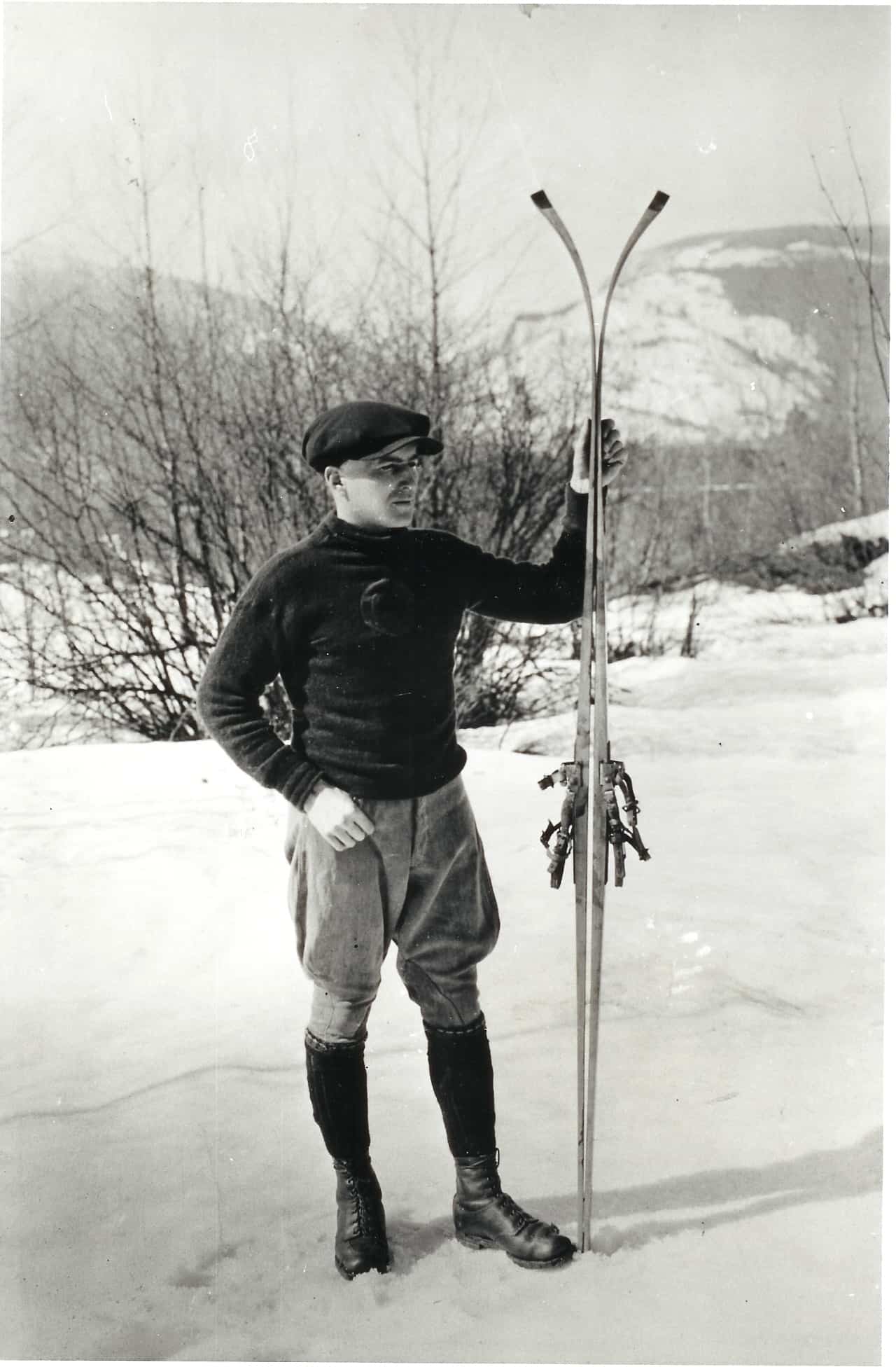
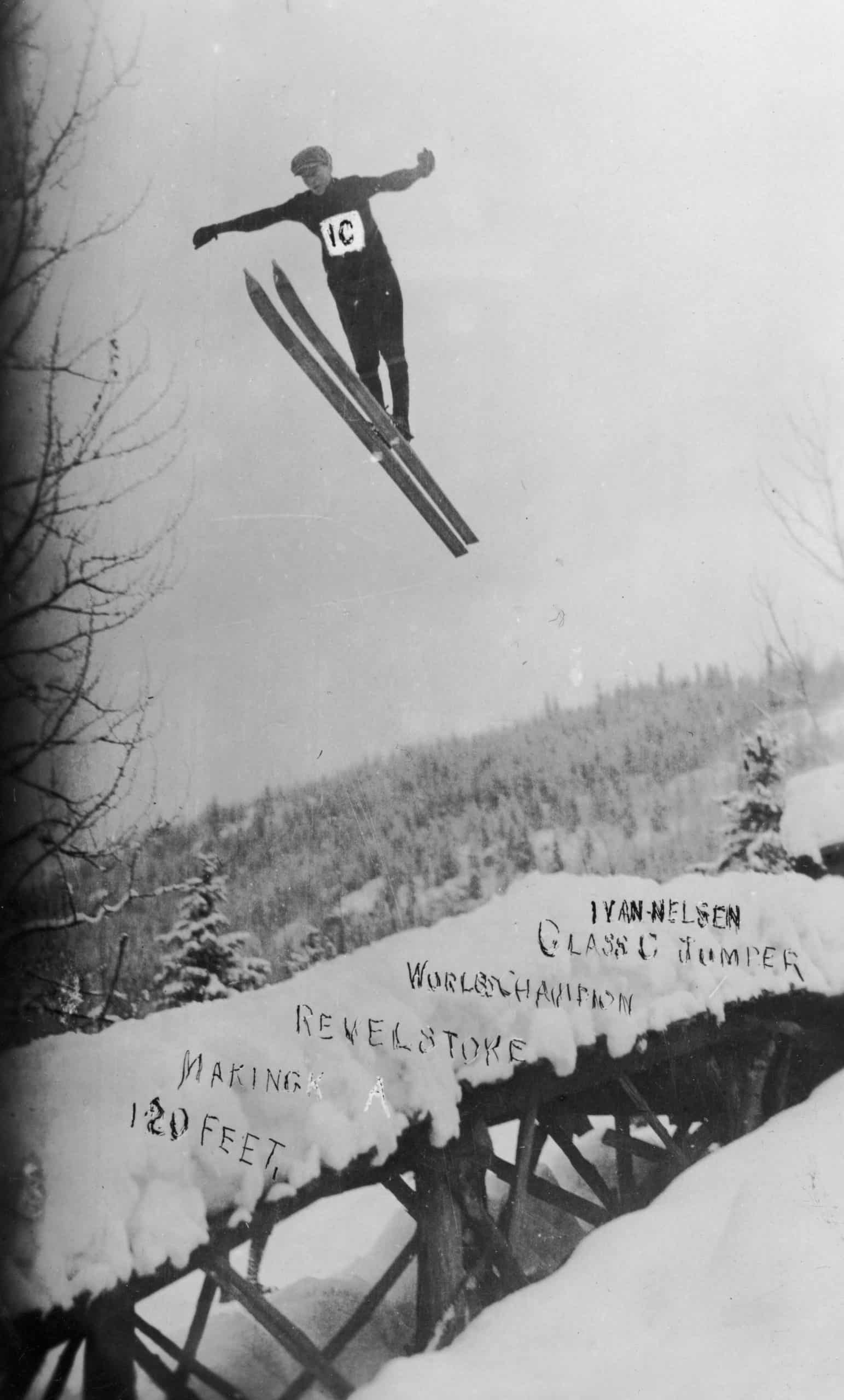
The Scandinavians brought the love of their sport to the small town of Revelstoke and started the Revelstoke Ski Club – the oldest ski club in BC. The earliest records of the club is a photo of 6 skiers with “odd looking contraptions tied to their feet” in 1891, but the official club status happened in December of 1914. By 1915 it was the largest ski club in Canada and Revelstoke was the “Capital of Canada’s Alps”, the main draw being the big ski jump in Mount Revelstoke National Park. Local legend, Nels Nelsen, was leading the charge, and in 1916 broke the world ski jumping record with an impressive jump of 56m/183ft.
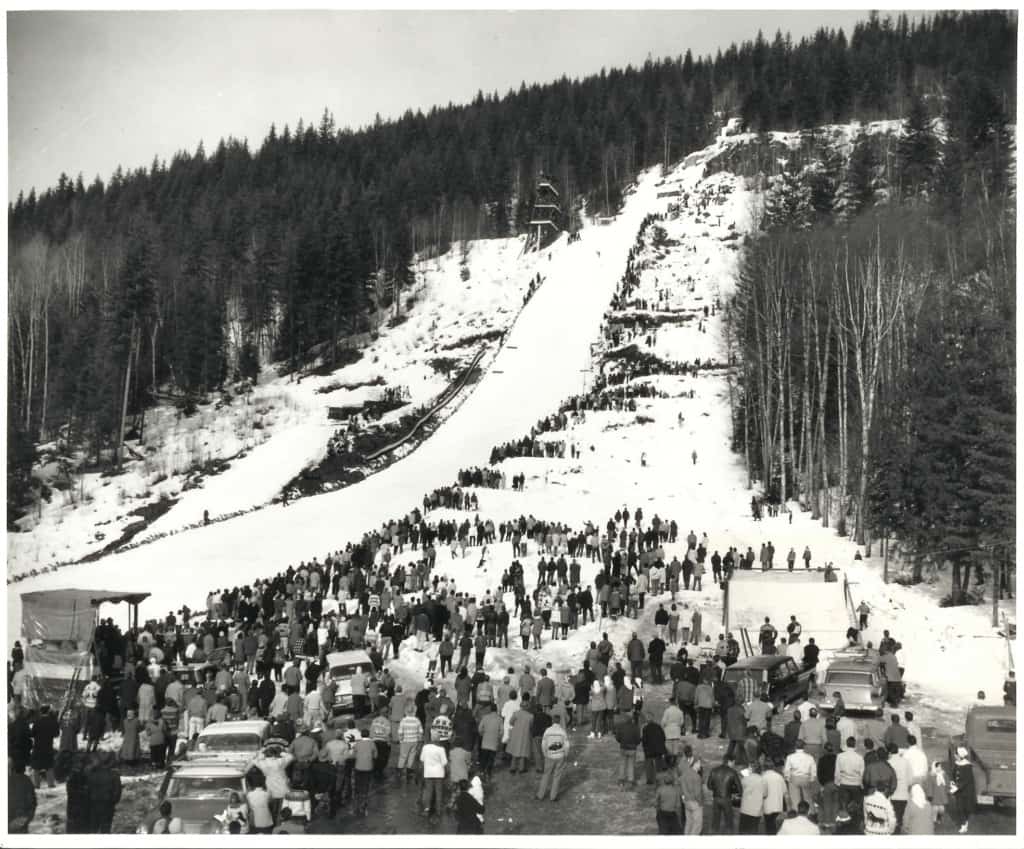
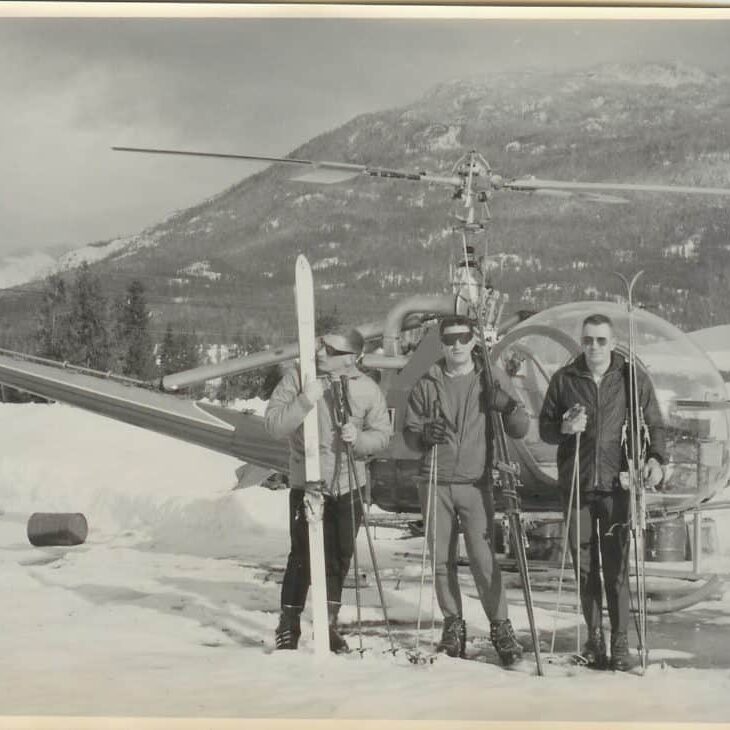
While ski jumping was the most popular and well documented, there are others that used skiing for their work – Ole Westerberg used skis to deliver mail 80kms north of Revelstoke for 35 years, as well as delivering supplies and maintaining a trap line along the way.
Fast forward to the 1950’s, to when Roger’s Pass became home to one of the first avalanche programs in North America was created to keep the railway safe from avalanches. The program was run by Fred Schleiss, who knew right away that it was critical his crew be competent on skis in order to do their work. On the heels of this program (which was already increasing the amount of ski travel occurring in the Pass) a man named Hans Gmoser arrived from Austria and became the first person to really start promoting backcountry skiing there. He filmed his ski and mountaineering adventures through the 1950’s and 60’s and would show his films around North America, trying to generate interest for his new ski company, Canadian Mountain Holidays, which would eventually become the largest heli ski company in the world.


In 1962 the Trans-Canada highway (which follows the same route through Roger’s Pass as the CPR) opened to the public, and cut travel time between Revelstoke and Golden dramatically. The old route would take you all the way up North to Mica via the Big Bend highway. This gave much easier access to backcountry skiers and other road travellers alike, but it wasn’t until the 80’s and 90’s when recreational skier numbers began to really soar. Backcountry users visiting the Pass have increased steadily since and in more recent years have gone through another massive explosion in popularity. Likely due to the Pass getting over 12m of snow annually.
Over the years Revelstoke became the heli-ski and cat-ski capital of the world, as well as the home of the Canadian Avalanche Association. In 2007 the town quickly transformed when Revelstoke Mountain Resort started spinning it’s lifts. The town is now full of folks with higher-than-normal stoke levels, and skis in tow.
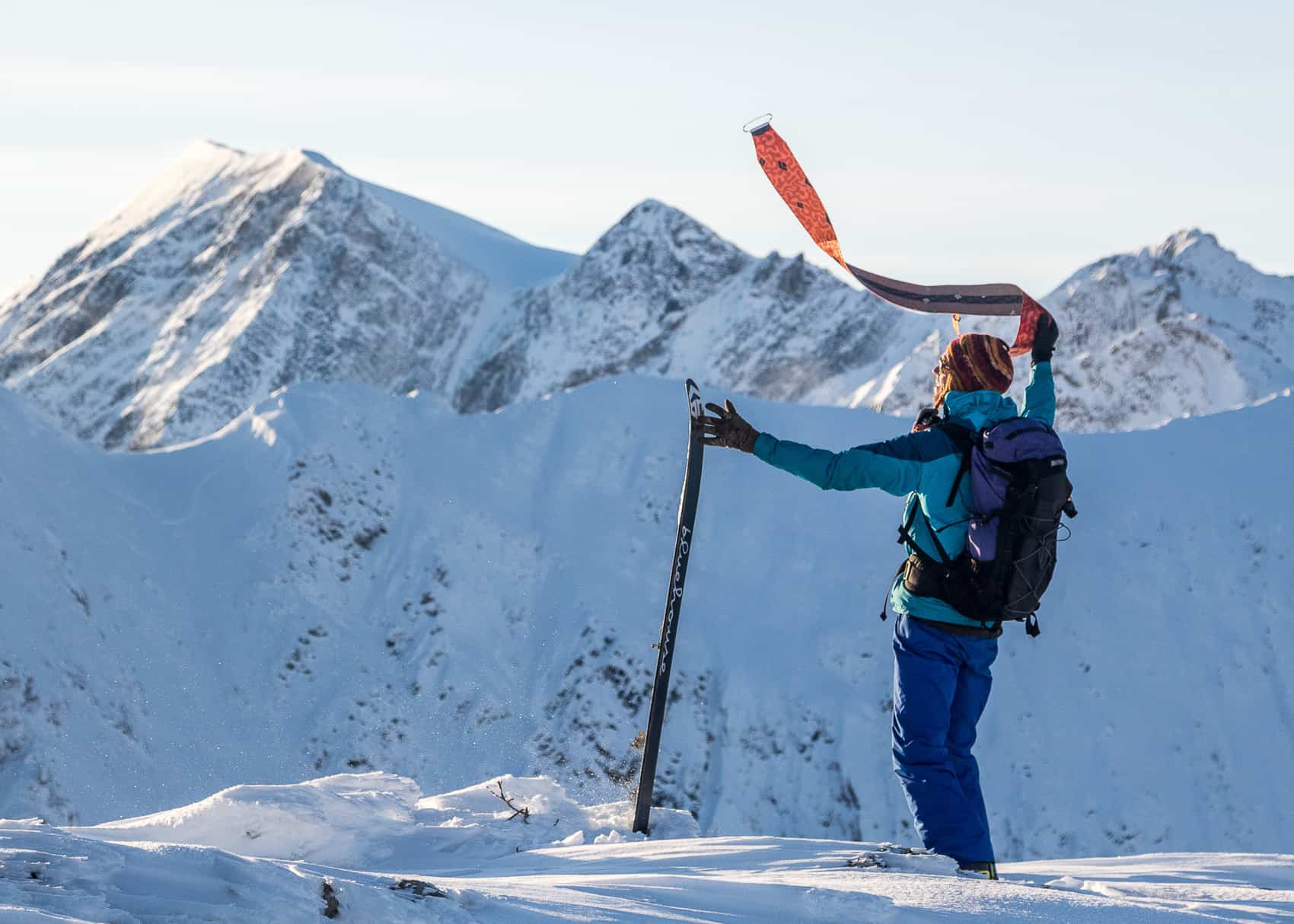
But enough history, and back to the real topic: ski touring. The touring around Revelstoke is nothing short of incredible. Rogers Pass is a classic option, or explore the old growth forests in the Monashees, or catch a lift to the top of Revelstoke Mountain Resort and tour from there. Early and mid-season the tree, pillow and powder skiing that surrounds Revelstoke is hard to beat, and could easily be called the best in the world. Spending a day walking up through the serenity of the forests is enough to have an awesome day. Add copious amounts of snow and pillows that you can hit on the way down, and it becomes the best day ever.
Come spring, when the days get longer and stability improves, the alpine becomes accessible. Getting up high in Rogers Pass is hard to beat – marvelling over the fact they built a railway and a road through these formidable mountains is one thing, staring at all the skiable lines is another.
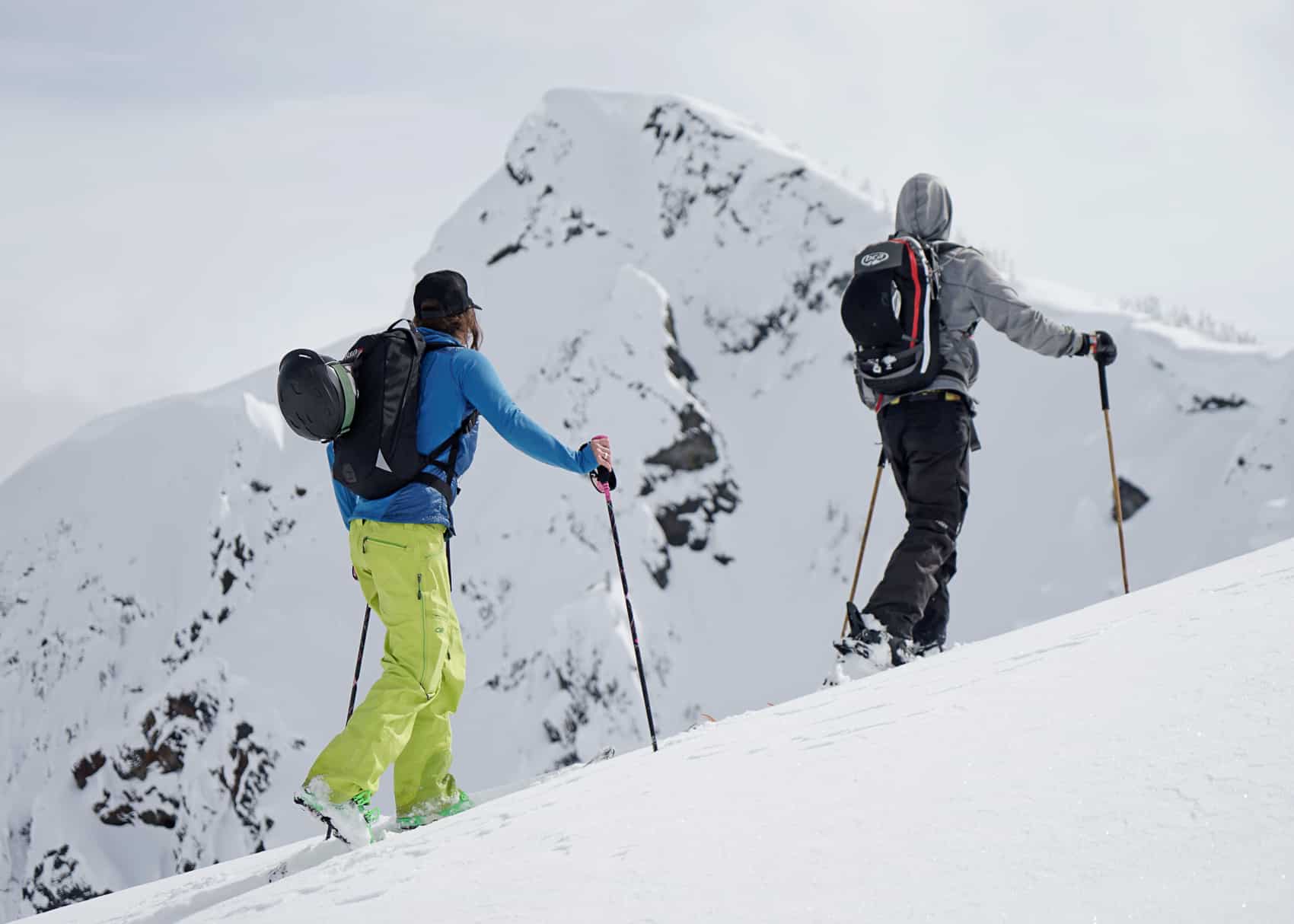
In the early season be prepared for stormy, snowy days where you are “stuck” skiing the trees with snow getting in everything. Later on when the weather gets better, be prepared for longer, bigger days; gaining elevation into the alpine.
While ski touring is a relatively simple sport there are lots small tricks and trips. The mountains are also extremely intimidating to novice ski tourers – that being said there are lots of guiding operations in town that will help with technique and keep you safe in the mountains.
Always check Avalanche Canada's website for weather and avalanche conditions.
Happy touring.
Words: Chris Rubens